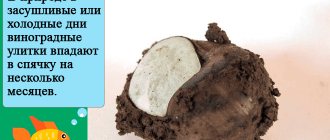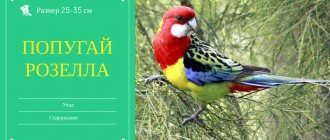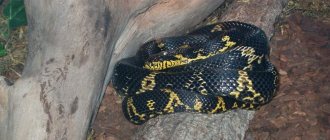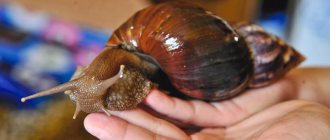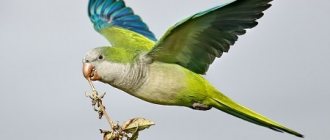Nothobranchius is an aquarium fish that is a representative of the carp-toothed family. It is quite popular among aquarists due to its unusual appearance, unpretentiousness in maintenance and relatively trouble-free reproduction. The genus of Notobranchiaceae is represented by dozens of species, but the most popular are: Notobranchius gunther, Rachova and Foerschi.
Habitat in nature
Varieties of carp-toothed animals live in Africa, they are found from Sudan to Zimbabwe. More than a third of the species are located in Tanzania - for a long time it was the main supplier of fish to European countries. The huge number of different colors of fish is explained by their habitat in hard-to-reach places, where they are located in relatively small reservoirs isolated from each other. Thus, they form local populations that differ in color.
As a rule, the habitat of Nothobranchius is a small, stagnant body of water (a ditch or puddle that fills only during the rainy season). The reservoir has a predominantly loose silty-sandy bottom containing a large amount of organic matter.
Description
From the description presented, you can understand what nothobranchius looks like. This is a small fish, reaching a length of approximately 5-9 cm. The body is elongated, slightly flattened on the sides, and has an unusual color of various shades with a brilliant shimmer of mother-of-pearl. Fish combines either several shades with iridescence, or one color with different shades. But, as a rule, the main colors are green, blue or red, each of which is replete with various spots and stripes.
The caudal fin has a luxurious appearance and resembles a fan. It can be decorated with a border of yellow, blue, black, orange or red. Males wear such bright colors. Females have a more modest appearance: their body is gray-brown, there is no shine and no border on the fin.
Epilogue
As they study previously inaccessible, for one reason or another, areas of the black continent, scientists annually discover new species of fish, among which nothobranchius is not uncommon.
Today, the massive import of various aquabionts, including new species of Nothobranchius, has significantly expanded the choice options for fans of spawning carp-toothed fish.
But so far, none of the newly discovered species has been able to surpass Nothobranchius Rakhov in brightness of color. Despite the fact that new species of spawning carp-toothed fish periodically appear on the Russian market, Rakhov's Nothobranchius has been and remains one of the most interesting inhabitants of the aquarium.
Nothobranchius species
As mentioned above, there are three most popular types of nothobranchius fish, each of which will be discussed in detail below.
Nothobranchius Gunther
This species has an elongated body, up to 7 cm in length; a large fin is clearly visible on the back, located quite close to the luxurious tail, similar to a fan. The pelvic fins, on the contrary, are quite small and have a white edge. When examining the fish, one gets the impression that it is covered with a net. This effect is created thanks to the red edging of the scales.
The tail is bright purple or red with a brown edge. Males have a bright color: in a calm state they are blue-green, and in a state of aggression they begin to turn black. The females are inconspicuous, the body is painted pale brown, the fins are colorless.
In terms of behavior, these are quite peaceful, calm fish that prefer to live in the lower layers of water. But if there are several males in one aquarium, they will begin to conflict. To minimize the resulting hostility, you can plant a large number of dense thickets and install shelters.
Notobranchius Rachova
This species of carp-toothed fish is no different in body structure from the previous species - Gunther. Rakhov's fish have an elongated and ridged body, which has a large dorsal fin in the rear and a large fan-shaped caudal fin. The head has large eyes, and the upper mouth is decorated with large cone-shaped teeth.
But the coloring is significantly different: males have “plumage” colored fiery red and decorated with a large number of blue spots located on the sides. Each fin (except the pectoral fin) has a bluish background, over which red lines and dots are scattered. The tail is additionally decorated with an orange stripe and black trim.
Females are faded, with a gray-brown color and transparent fins. The maximum length of the fish is 4-5 cm. They live in captivity for no more than one year.
These fish are quite peaceful, but territorial; they prefer to swim in the lower and middle layers of water. To avoid fights and conflicts between fish, you should not initially place several males in one aquarium - one will be enough.
Nothobranchius foerschi
Males of this species grow up to 5 cm in length, females - up to 3.5 cm. Males have a light green or bluish color, the most saturated colors appear on the back. They are decorated with a red tail and yellow fins with red specks. Females are pale brown or gray in color, their scales are decorated with a dark pattern.
These underwater inhabitants should be placed in a group of 3-4 individuals, and for such a number an aquarium with a volume of at least 50 liters is required. To decorate the tank, you need a large amount of algae and plants that would imitate a swampy pond in the natural environment.
How to create the right conditions
- You will need an aquarium with a volume of at least 80 liters and a length of 60 cm. In such a container you can keep about 6-8 fish, for example, two males and 4-6 females.
- It is better if the water has a temperature of 20-24 °C, acidity from 6.0 to 8.0 pH and hardness in the range of 2-12 °dH.
If you cool the water to 18-20 ° C, this will lead to a slowdown in the metabolism in the fish’s body and, ultimately, to an increase in their life expectancy.
- The water needs to be well aerated, filtered and a quarter of its volume replaced weekly. To prevent diseases (most often mycobacteriosis and oodinosis), you can also lightly add salt to it (1 g per 1 liter). Fish are very sensitive to copper sulfate, so treating them with drugs containing this substance is undesirable.
- Lighting should be diffused and of medium intensity.
- Peat chips should be placed at the bottom.
- It is better to plant plants on the sides of the aquarium, and leave room for swimming in the center. It’s a good idea to plant floating varieties on top, which will create shaded areas.
Maintenance and care
As a rule, Nothobranchius are quite unpretentious aquarium fish and are able to survive even in extreme conditions. However, so that they do not cause trouble, it is recommended to follow all the parameters and rules for arranging an aquarium:
- Storage tank. A 40 liter aquarium will be sufficient for a small group of fish. Since in nature they live in small ditches and puddles that are flooded only during the rainy season, they do not need much space for a comfortable life.
- Equipment. Any filter can be suitable for Nothobranchius, it is only important that it does not create a current (this way the conditions will be as close to natural as possible). For this purpose, it would be good to install a “sprinkler” or flute that will break up the flow.
- Water. It is recommended to use soft water, but if the hardness levels are slightly increased, there will be no harm. The temperature should be around 20-23°C, the acidity should be 6.5-7 pH, and the hardness should be 5-20 dGH.
- Lighting. These fish do not need a bright and powerful lamp, since carp teeth prefer to stay in the shade. In this regard, the light should be dimmed; it would be ideal to place emergent plants that will create shade.
- Priming. Ideally, you should use dark sand or small pebbles. Basically, these underwater inhabitants like it when the substrate contains a lot of silt, and the water contains a large amount of organic matter.
- Decor. To decorate the aquarium, it is better to take natural stones and driftwood, which will perfectly imitate the natural landscape of the reservoir and will become an excellent shelter.
Also, do not forget that it is necessary to replace the water at least once a week to prevent algal blooms and the development of harmful bacteria. In dirty water, fish will not give birth and will live no more than 3 months.
But how long do fish live if they are well cared for and maintained? The lifespan of Nothobranchius in captivity is approximately one year.
How to create conditions
In general, everything needs to be done as for the Gunter variety:
- Take a container of at least 50 liters and a front wall length of at least 40 cm.
- Line the bottom with peat crumbs.
- Create lots of shaded corners and shelters from plants and driftwood. It is better to place the thickets on the sides. On top there is something floating, like a riccia. Leave room for swimming in the center.
- Maintain water parameters in the following ranges: temperature 20-24 °C, acidity 6.0-7.5 pH, hardness up to 12 °H. Replace a quarter of it weekly. Install a powerful filter with an aerator.
- Provide dim lighting.
- Remember that Nothobranchius rachovii is prone to oodinosis and cannot be prevented by adding salt (1 tsp per 4 l).
Feeding Nothobranchius
Fish have an accelerated metabolism, so feeding should be done twice a day: in the morning and in the evening. In order for fish to grow well and develop properly, their diet must include live food that is rich in protein and microelements:
- Shrimp pieces;
- Daphnia;
- Artemia;
- Earthworms;
- Mosquito larvae;
- Bloodworm.
It is also possible to feed frozen food, but its portion should not be more than 1/5 of the total amount of food per day.
Compatibility with other fish
Nothobranchiuses are distinguished by their peaceful and good-natured character. They do not show aggression towards their fellows or other fish. They get along well with other ornamental fish that are similar to them in temperament, behavior and size, for example, these can be small tetras and rasboras.
Due to their rather small size and calm nature, nothobranchius should never be placed in the same aquarium with predatory and large fish, since they will perceive small fish only as prey. Also, you should not place them with some varieties of ancistrus, goldfish and other species with veil fins.
There should be 3-4 females per caprodentate male. Sometimes there are more males in the aquarium, then skirmishes and conflicts cannot be avoided. However, disagreements, as a rule, do not end in injury, since the fish do not hit, but rather threaten.
Fish reproduction
Before breeding Nothobranchius, many inexperienced aquarists wonder how to determine the sex of these fish. This is very simple to do: the sexual differences between nothobranchius are bright colors and large sizes in males and faded, nondescript color, as well as small size in females.
Notobranchius become sexually mature at the age of 1.5 to 3 months. To get beautiful and healthy offspring, it is necessary to select the most vibrant, attractive, healthy and strong male and female individuals. They will need to be placed in a separate aquarium, with a volume of 30-40 liters and with peat soil at the bottom. The duration of spawning can reach 2 weeks.
At this time, aquarists need to regularly and carefully inspect the eggs, removing damaged ones. After birth, the fry will initially feed on the remains of the yolk sac. Small fish take several months to grow. During this period, they need to be fed with “live dust” and be sure to monitor the water temperature, which should be between +20-25°C. When the fry are one month old, they can be transplanted into a community aquarium.
Nuances of breeding
In rare cases, the conditions of an ordinary aquarium will become favorable for Nothobranchius to begin to reproduce. Creating ideal conditions for spawning is not easy, given that these conditions will be a hot climate and high humidity above the surface of the water.
But fish are still bred in an artificial environment. To do this, you should heat the water in the aquarium a few degrees higher than usual, creating more darkness than usual. Before this, females and males are separated into separate containers and fed with a large amount of live food.
After a few days, the females and males are united. A prerequisite will be the presence of peat soil, which the fish will mistake for the mud of a reservoir in their natural habitat. During spawning, the male and female are close together so that the eggs can be fertilized by the milk secreted by the male. Within a minute, both can spawn and spawn several times.
Follow the tips for breeding these fish
After this, the female buries the eggs shallowly in the peat soil and leaves them. During artificial breeding, the zoologist collects the soil with the eggs in a separate bag after preliminary drying. Do not allow it to dry out completely, as this can kill the eggs. Leave the peat in the bag slightly damp, remove any air from it and leave it for about 12 weeks to allow the eggs to mature.
During this period, you should prepare a container where the newborn fry will grow. After the required period of time, the dried peat is placed in a container with water, the level of which does not exceed 3 cm. Within an hour, you can observe how individual fry hatch and the eggs float. Newborn fry are collected using a syringe and placed in an aquarium where they will grow.
A prerequisite must be the presence of peat chips and special moss in the aquarium. Conditions for keeping fry are similar to those necessary for adults. As a rule, a week is enough for all the mature eggs to hatch. After this, the peat is collected again according to the previous scheme and left for 12 weeks.
A similar pattern of drying and placing the peat in water should be repeated until all the eggs hatch. As a rule, this will require 3-4 cycles of drying and placing in water.
You should not keep fry with large individuals.
It is quite difficult to repeat such manipulations at home, so breeding is carried out by professionals in specially equipped premises. The reproduction process is long and labor-intensive, but the result is worth it.
In the first 2 weeks of life, fry are fed with small live food, gradually switching to adult food. Fry should not be kept together with adult fish , since males and females can destroy them.
https://youtu.be/wt3HzZ8rWLc
Nothobranchius are unique fish with bright colors, peaceful nature and the ability to reproduce in captivity. Any type of this fish will be a good addition to your home collection if you choose your neighbors wisely. To prolong the life of individuals, it is recommended to comply with the conditions of maintenance, equipment of the aquarium and feeding.
Diseases and their prevention
To prevent your fish from having health problems, it is important to monitor the water parameters, regularly replace it with clean water, generally keep the aquarium clean and feed it with balanced food. If this is not done, nothobranchius may experience the following diseases:
- Oodiniosis. Symptoms of the disease are: gluing of fins, the appearance of gray nodes on the body and fins, in which a gray or golden substance resembling dust is formed. To fight this disease at the initial stage, you need to add salt to the aquarium, and if the disease is advanced, use Bicillin-5 for three days every evening.
- Ichthyophthyriosis. The disease manifests itself in this way: the fish exhibits stressful behavior, it rubs itself on various objects, rises closer to the surface of the water, swallowing air, and white growths can form throughout the body. To combat the disease, add one tablespoon of table salt per 10 liters of water.
- Mycobacteriosis. Signs are: lethargy of the fish, it has no interest in food, it stops moving around the aquarium, the color may change, open ulcers appear, and problems with scales may arise. It is not possible to cope with the disease at home.
Diet
Nothobranchius Rakhov have pronounced food preferences. Giving preference to small flying insects falling on the surface of the water, as well as their larvae living under water. With less pleasure they eat small crustaceans and tubifex. Despite the fish’s commitment to live food, it is quite possible to accustom them to freezing, and even to flakes.
Frozen food must be given frequently and in small portions, since fish do not pay attention to food that has settled to the bottom, and the water in a small aquarium without a filter quickly becomes contaminated.



